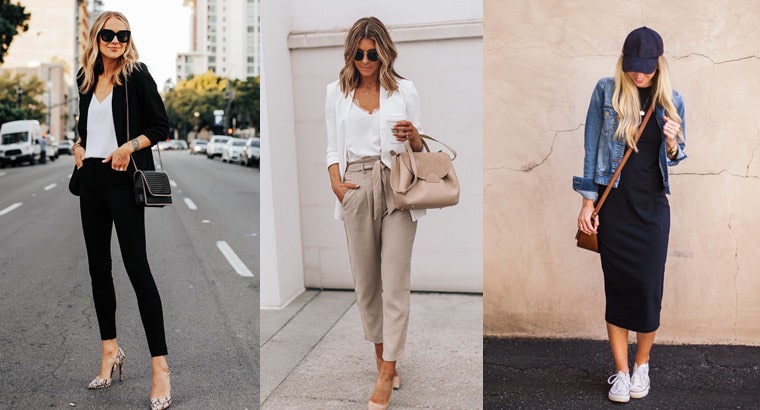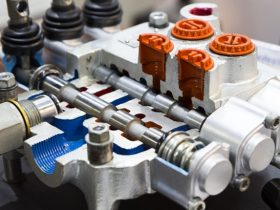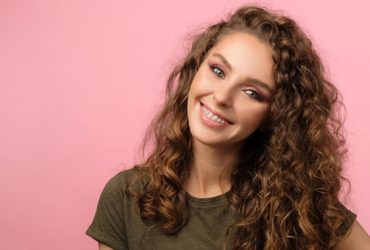Job interviews are quite stressful, with trying to think of appropriate answer questions, what to say about yourself, and how you’ll say it. However, what you wear is also important since it has to impress a potential employer.
In fact, interviews are about showing yourself in the best light, and your clothes play a vital role in that. Whether you’re applying for a position in a casual setting, or a business environment, this guide will help you figure out what to wear to an interview.
What to Wear to an Interview

Image source: Pinterest
When it comes to choosing interview attire, you should stick with a smart-casual outfit and avoid loungewear and denim. Printed blouses, smart tailoring, and short dresses are stylish choices and can impress a potential employer. But if you love sheer fabric, you can pair it with a knitted vest or a cami to maintain a professional look.
No matter which outfit you have in mind, it’s important to prioritize your comfort. So avoid clothing that’s too tight or uncomfortable, as you might have to constantly readjust it, which can quickly become a distraction.
Color-wise, you should go for simple yet powerful palettes. An all-black attire will make you look confident, especially if you pair it with statement jewelry.
4 Best Interview Outfits
Do you need some extra help to get ready for your interview? Here are some examples of outfits that you can wear based on the job environment.
1. Formal Business Outfit
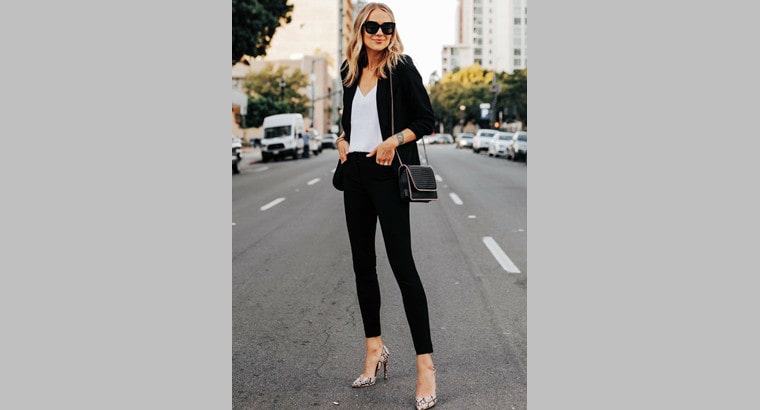
Image source: Pinterest
Business formal is usually the standard interview dress code. While choosing the right clothing for this style takes some effort, you will be able to impress any hiring manager.
For your top, you should wear a blazer and a white button-down shirt. Make sure to pair your blazer with some matching cropped dress pants. When it comes to shoes, tailored flats, preferably black, are your best bet. And if you want to add some extra elegance, don’t forget to wear your favorite gold or silver earrings.
2. Casual Business Outfit
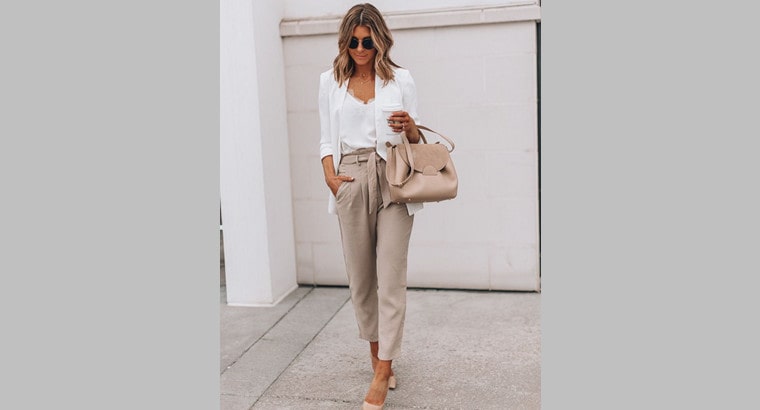
Image source: Pinterest
If you are interviewing for a position in a more relaxed environment, such as an IT company, a casual business style is more acceptable. The aim is to look as professional as possible without going over the top.
The perfect casual business outfit should start with a tailored blazer and a blouse. Keep in mind that a traditional tuck-in will make you look more professional than a French tuck.
For your pants, you can either wear navy chinos or some cropped dress pants, as you can pair them with neutral flats or loafers. But try to avoid wearing too many accessories, as your watch and earrings should be enough.
3. Casual Outfit
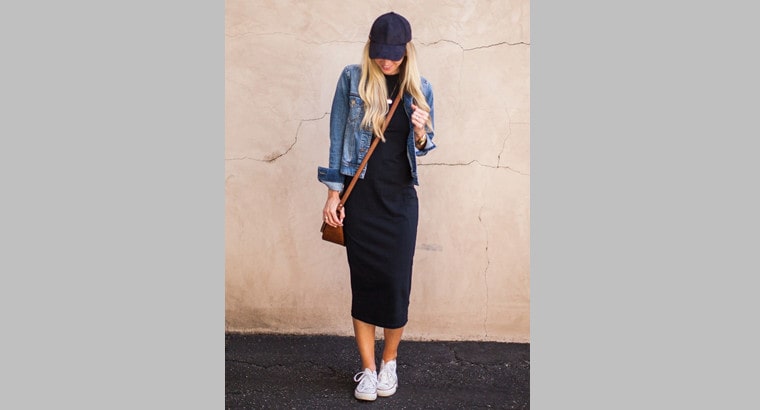
Image source: Pinterest
When applying for a job at a small start-up, a cafe, or a clothing store, it can be hard to know exactly what to wear. If the company doesn’t have a required uniform, you’ll want to go for a more casual-looking outfit.
Casual is all about keeping it simple, so avoid a low-cut top and go for a simple blouse or a sweater. A pair of dark-colored jeans should blend perfectly with your top and your low-heeled booties. As for your accessories, wear a pair of small earrings and a basic silver or gold necklace.
4. Worker Outfit
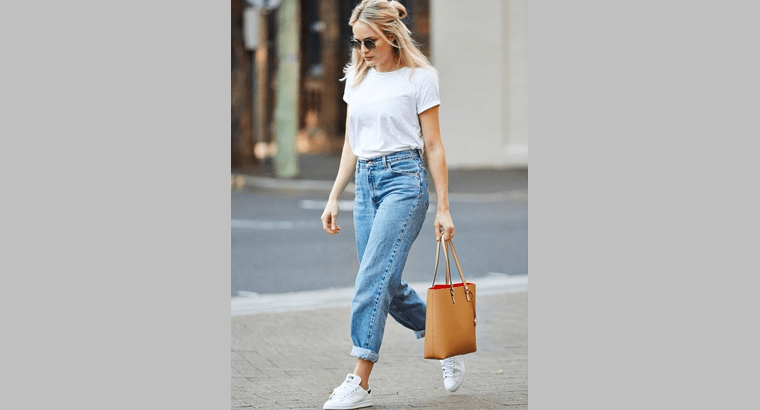
Image source: Pinterest
If you want to apply for a job that is outdoors or involves manufacturing work, you’ll need to wear a comfortable outfit. That is particularly true if the position involves a lot of manual labor.
Start by wearing your best jeans, free of holes, stains, or worn-out patches. Pair them with a nice blouse or shirt, but avoid those that are too tight, short, or feature graphics on the front.
Any pair of covered-toe shoes that don’t have a heel should be appropriate for most positions in this environment. And lastly, don’t wear any jewelry that could hinder your work.
What Not to Wear to an Interview
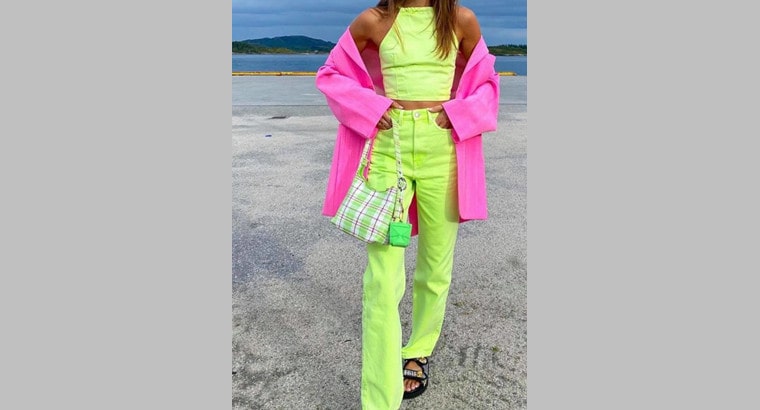
Image source: Pinterest
Now that you know what to wear to an interview, it’s time to see what clothing you should avoid at all costs:
• Bright colors: Depending on the job environment, you’ll want to avoid bright, flashy colors like red. Not only can they accentuate the clothing’s inappropriateness for the setting, but they can also distract the recruiter during the interview.
• Overly casual outfits: Warmer temperatures might tempt you to go for a casual outfit no matter the setting. However, casual shorts or sundresses should be avoided, as they will make you look less professional.
• Dated fashions: The job market is very competitive, so every detail matters, including your overall appearance. If your wardrobe is outdated, invest in some fashion-forward clothing. Otherwise, you’ll look like you don’t put a lot of thought into your appearance, which can be a dealbreaker for some employers.
4 Tips for Choosing Your Interview Outfits
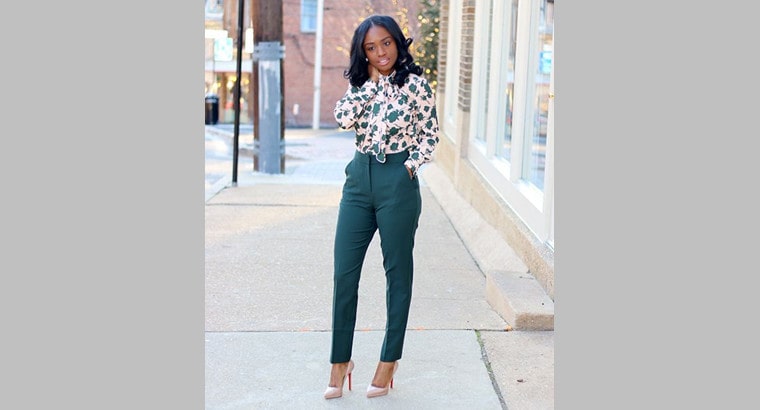
Image source: Pinterest
The following tips will help you create the perfect outfit no matter what kind of position you are applying for.
• Research the company: Study the company’s website to find clues on how staff members usually dress for work. That will give you an understanding of the general look you should aim for.
• Keep it simple: Even though you want to look as impressive as possible, you want the hiring manager to focus on your personality, not just your outfit. So try to keep your attire simple without wearing too many accessories or over complicated pieces of clothing.
• Do a dress rehearsal: To avoid wardrobe malfunctions, it’s best to do a dress rehearsal a day before the interview. That allows you to fix missing buttons and iron out any wrinkles.
• Get your shoes right: Shoes can make a statement about you, so make sure they look the part. It’s better to spend a few hours before the interview testing different shoes than to realize later how horribly they match your outfit.


